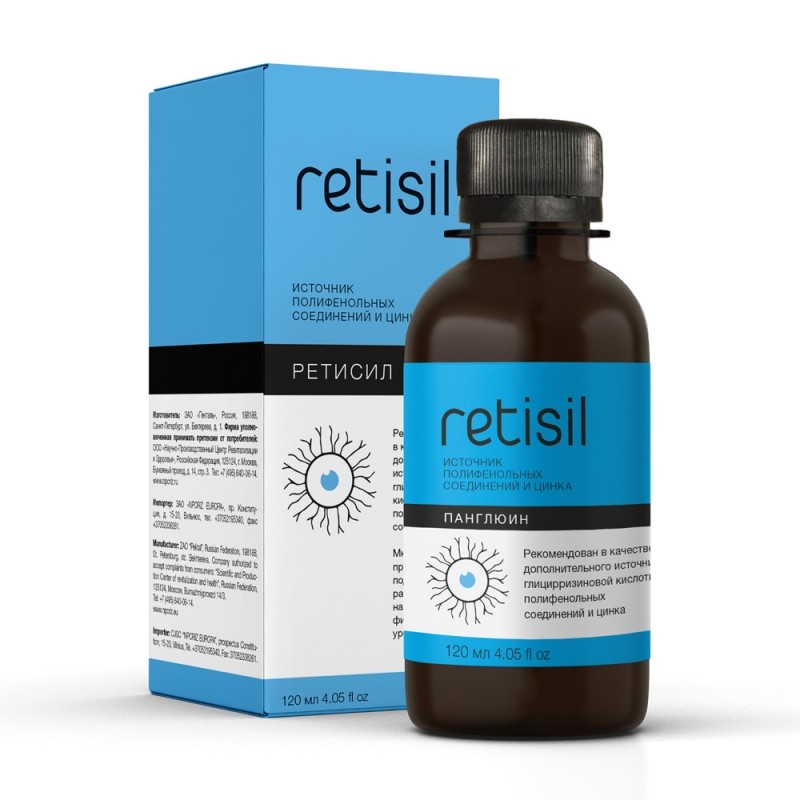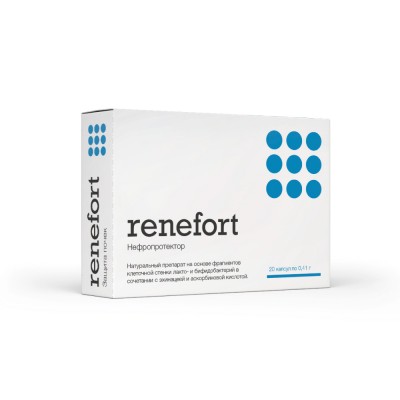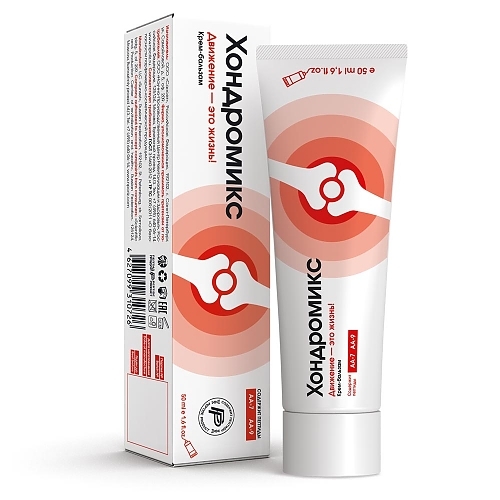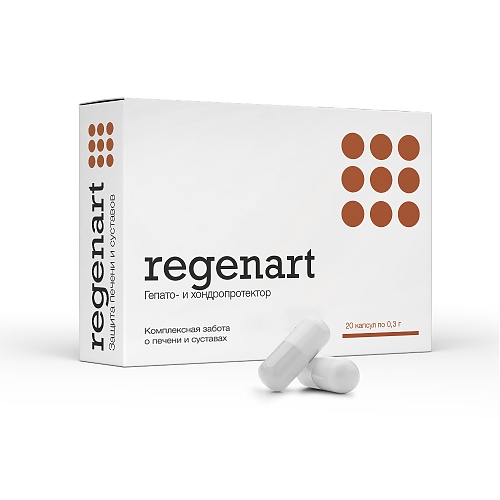Complex 3D as a gift with a one-time purchase of over 250€
Change regional settings
Best before 07.2024
RELIABLE HELP FOR THE EYES
A multi-product, which supports the work of the vision at optimal physiological level. Contributes to the improvement in blood flow and metabolism in the retina. Prevents atrophy of the optic nerve and the development of angiopathy and macular degeneration of different genesis. Helps to relieve eye fatigue and improves vision.
Recommended
- eye fatigue syndrome,
- cyclospasm,
- diabetic and atherosclerotic retinal angiopathy,
- retinitis,
- retinal detachment,
- optic atrophy,
- bad vision during darker day periods.
water, fructose, concentrated cranberry and blueberry juice, extracts of: rose, grape seed, nettle, lemongrass, green tea, licorice, zinc lactate, sodium benzoate, potassium sorbate.
Recommended as a source of glycyrrhizic acid, polyphenol compounds and a additional source of zinc.
2 teaspoons (10.5 g) contain at least:
glycyrrhizic acid - 2.4 mg, which is 24% *
polyphenols - 20 mg, which is 20% *
Zinc - 3.3 mg, which is 27% *
* From adequate daily requirement
Rosehip is the whole laboratory, battery health. Vitamin C in them than in the currants and lemon. There are vitamins B, K, P, carotene, sugars, tannins, organic acids, pectin, trace elements. The seeds contain vitamin E. The preparations of this natural multivitamin fruit concentrate is often used for the prevention and treatment of scurvy, night blindness and other vitamin deficiency, anemia, chlorosis, atherosclerosis, hypertension, diseases of the digestive system, diabetes, bleeding. Rose hips cinnamon are also used to improve blood circulation in the blood vessels of the brain, as well as myocardial and heart disease.
Urtica dioca
The plant contains vitamins C and K, B2, carotene, pantothenic acid, chlorophyll, iron salts, potassium, calcium, sulfur, sugar, proteins. Nettle strengthens blood vessels, normalizes blood clotting, increases the amount of hemoglobin, platelets and red blood cells, reduces blood sugar, has diuretic, wound healing and restorative effect. Nettle is useful for bleeding, anemia, atherosclerosis, diseases of the kidneys, bladder, liver and gall bladder, hemorrhoids, tuberculosis, metabolic disorders, during the recovery period.
Licorice
Licorice root (rhizomes and roots) contains glycosides, sucrose, flavonoids, essential oil, vitamin C, yellow pigment, minerals, pectin, etc. Licorice is known for its enveloping, expectorant and mild laxative effect. Expectorants properties associated with its content in the roots of glycyrrhizin which amplifies the secretory function of the upper respiratory tract and improves mucociliary activity in the trachea and bronchi. The saponins contained in the plant, irritate the mucous membranes of not only the respiratory tract, but also in other organs, thus increasing the secretion of the glands, so the composition of licorice include expectorants, diuretics and laxatives. Because of licorice flavonoid compounds preparations spasmolytic effect on the smooth muscle of the bronchi. The licorice contains a substance similar in structure to how, and by the action of steroid hormones that are produced by the cortical layer of the adrenal glands, and have very strong anti-inflammatory properties. Because licorice identified a number of biologically active substances that reduce cholesterol in the blood and promotes the disappearance of cholesterol plaques in blood vessels. In the form of decoction, tincture, extract or powder rhizome with the roots of licorice is used as an expectorant in diseases of the lungs, accompanied by cough; as anti-inflammatory and antispasmodic giperatsidnom gastritis, gastric ulcer and duodenal ulcer; as a laxative and regulating water-salt metabolism in diabetes; composed of mixtures of drugs - as a diuretic and laxative. As an aid preparations of licorice root is used in Addison's disease, hypofunction of the adrenal cortex. In order to stimulate the adrenal cortex licorice used in systemic lupus, allergic dermatitis, pemphigus, eczema.
Blueberries
Cranberries - a rich source of so-called anthocyanins and proanthocyanidins, which are the most powerful of all natural antioxidants. Bilberry extract has proven its ability to increase the amount of the substance dopamine in the body. This compound regulates the most important processes in the brain. Dopamine helps produce growth hormone (somatropin), which is responsible for cell renewal and rejuvenation of the whole organism. Under the influence of blueberry notes as to improve the throughput of cell membranes and reducing inflammation. Improves the transmission of nerve impulses from the nerve cells to other cells in the body.
In folk medicine blueberries are used in the treatment of urolithiasis. Leaves and fruits contain substances having insulin-like action and therefore a beneficial effect in diabetes, reduce blood sugar levels. Thick broth of fresh berries and juice are used in folk medicine in the treatment of eczema, skin rashes, festering wounds, burns, and hemorrhoids, to rinse with stomatitis and sore throat.
Long-term methods of fresh berries are also shown in rheumatism, gout and other metabolic diseases. Prolonged consumption of blueberries contributes to the improvement of visual acuity. Blueberries are a good eye fatigue when reading, working with computers, while driving a car at night. Due to the high content of flavonoids and phenolic acids, fresh, dried and canned berries are useful in atherosclerosis, hypertension, and other pathological conditions associated with reduced strength of the walls of blood vessels.
Lingonberry
Lingonberry is one of the most popular berries, especially in the northern regions of Russia. Cowberry fruits contain a large amount of sugars (up to 10-11%), ascorbic acid, (up to 2.5%) a lot of organic acids (ursolic, gallic, tartaric, quinic, ellagic, citric, malic, oxalic), tannin, glycoside, vaccinin, tannins, carotene, pectin, vitamin C, mineral salts. It should be emphasized that among the organic acids contained in lingonberries, there is a rather large proportion of benzoic acid, which has powerful antiseptic properties.
In medicine, lingonberry juice and lingonberry puree are often recommended for beriberi, with fever. Cowberry juice has a mild laxative effect, so it is recommended to use it for gastritis with low acidity of gastric juice, as well as for edema of various origins: lingonberry juice has a pronounced diuretic effect. Cowberry juice is very useful for high blood pressure, rheumatism and gout.
Lemongrass
The fruits are rich in biologically active substances. In dry sugarless - up to 16%, organic acids (citric, malic, succinic, tartaric, etc.) - 10, tannins - 3, pectins - 0.15%, and dyes; in freshly sugars - 2% ascorbic acid (vitamin C) - 70 mg%, and are citrine (vitamin P) sterols and carotenoids, essential oil and others. In seeds present fatty oil - 47% of essential oil - 3 %. The fatty seed oil is a tocopherol (vitamin E) - 30 mg%. The juice and the seeds of many macro and micronutrients, particularly silver and molybdenum. The active ingredients of lemongrass - schizandrin, skhizandron and several other compounds is quite complex composition (contains the seeds). You can use fresh and dried fruits, as well as tincture of seeds and fruits, seeds powder. In the Far East the fruits of Schisandra has long been used as a tonic and to treat many diseases: colds, frostbite, impotence, shortness of breath, gastrointestinal disorders, and so on. D. Fruits and preparations of Schisandra stimulates the central nervous system, stimulate cardiovascular activity and respiration, increase efficiency, relieve fatigue during physical and mental stress, lethargy, nervous exhaustion, neurasthenia, depression and so on. f. Promote high blood pressure, exacerbation of night vision.
Green tea
Green tea contains a polyphenolic compound, catechins, trace elements, vitamins. One significant therapeutic properties associated with green tea catechins included in the chemical structure of tea leaves as bioflavonoids species (substances known as "vitamin E"). The main therapeutic effect of catechins is to strengthen the walls of blood vessels and increase their flexibility. Furthermore, catechins contribute to the accumulation of vitamin C in the body, preventing its degradation by oxidation at the molecular level. Green tea polyphenol compounds inhibit the formation of free radicals (oxygen atoms with high energy damaging intracellular membrane) in the metabolic process, and also prevent the formation of blood clots and improve vascular circulation. Long-term consumption of green tea (from 30 days to 3 months), normalizes blood pressure. An important therapeutic properties of green tea is its ability to rid the body of toxic substances - products of infectious and inflammatory processes.
Grape seeds
It has long been known for its medicinal properties for centuries for its high content of vitamin R. This vitamin is vital for complex human connections that prevent capillary fragility. Procyanidins, an antioxidant that is found in grape seeds, helps rid the body of aggressive radicals. This promotes natural improve overall health and enhance immunity. Grape seed extract is used for lowering cholesterol, in the treatment of vascular diseases. Antioxidants are part of grapeseed, slow down the natural aging process, and is rich in vitamin composition has an even more pronounced effect in the fight against the decay products in the body than vitamin C. Vitamin E contained in the bones, prevents cardiovascular diseases and cancer.
Zinc
If any of the trace element can be called vital and rejuvenating, it is his. Root hormones of the body - testosterone, growth hormone, insulin and insulin-like growth factor 1 (IGF-1) - can not exist without it. In most reactions involving these hormones zinc is used as enzyme activator. Total it activates more than 200 enzymes. Zinc strengthens the immune system, increasing resistance to disease, and also works as an antioxidant. It is required for sperm production and synthesis of testosterone. Its concentration in the prostate more than in any other organ. Zinc is necessary for normal metabolism of vitamin A and vision. With its lack of zinc metabolism is greatly hampered by proteins and insulin production. In addition, zinc is necessary for peptides, DNA and cell division. By participating in the reactions of the enzyme superoxide dismutase (SOD), zinc protects cells from the damaging effects of free radicals. When zinc deficiency thymus, where T cells mature, employees protection against a variety of illnesses and tumors immediately lowers their productivity. One of the main reasons for the weakening of the immune system that, without an adequate supply of zinc in the blood level of cortisol rises. Cortisol, a hormone produced by the adrenal glands, is known for its suppressive effect on the immune system. Zinc is essential for the synthesis and release of growth hormone. The pituitary gland is the largest storage of zinc in the body. Zinc deficiency reduces the level of IGF-1, a factor regulating the growth and renewal.
Adults and children over 14 years old: 1 teaspoon (5.25 g), 2 times a day during meals. Course duration 1 month. Possible to repeat a course 3-4 times a year. Shake well before use.
3 packs per course
2 packs per month
1 package per course
1 pack per 1-2 month
1 pack per course
1 pack per month
2 packs for 1 month
3 packs per course







 Share
Share 






